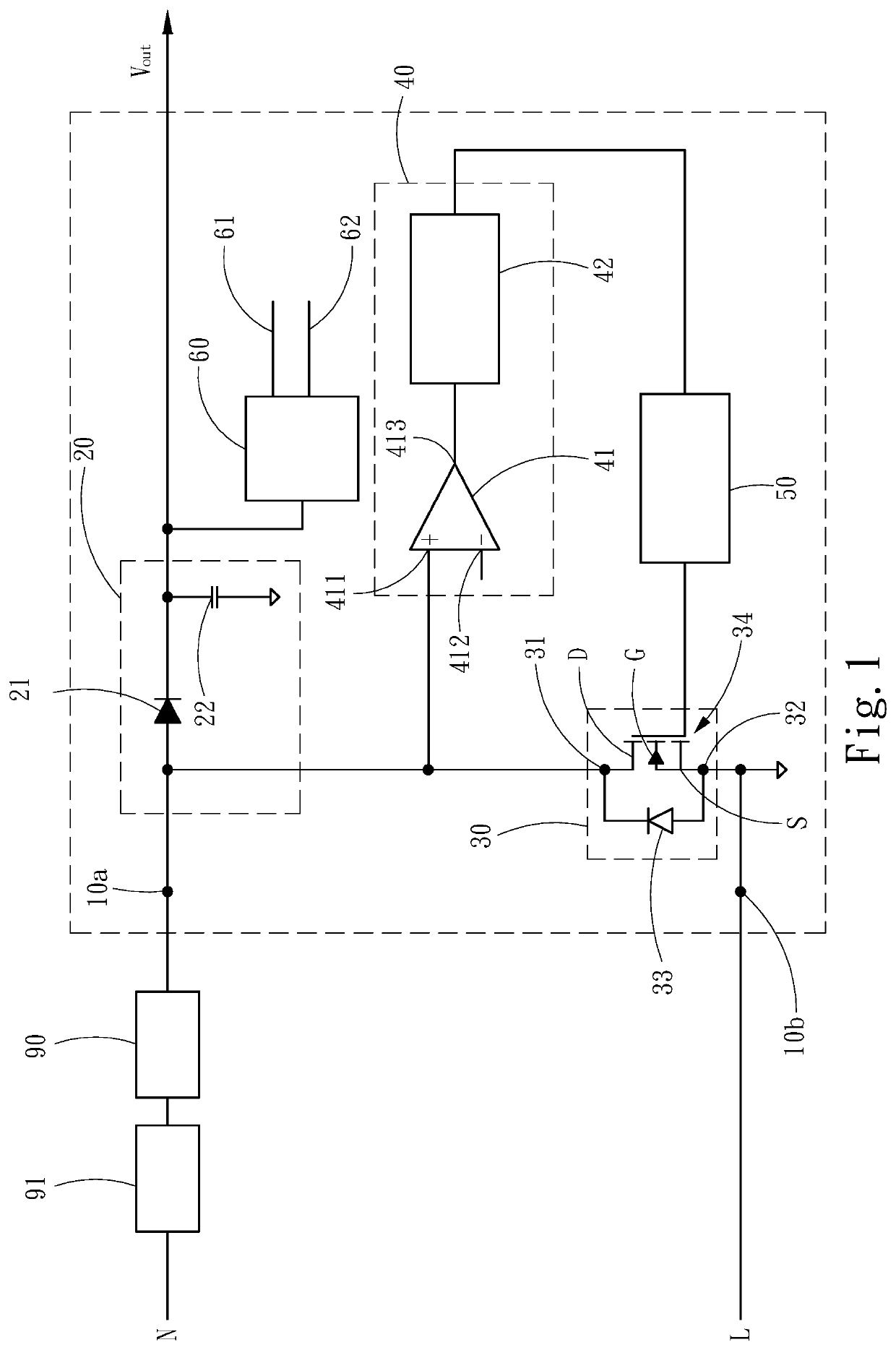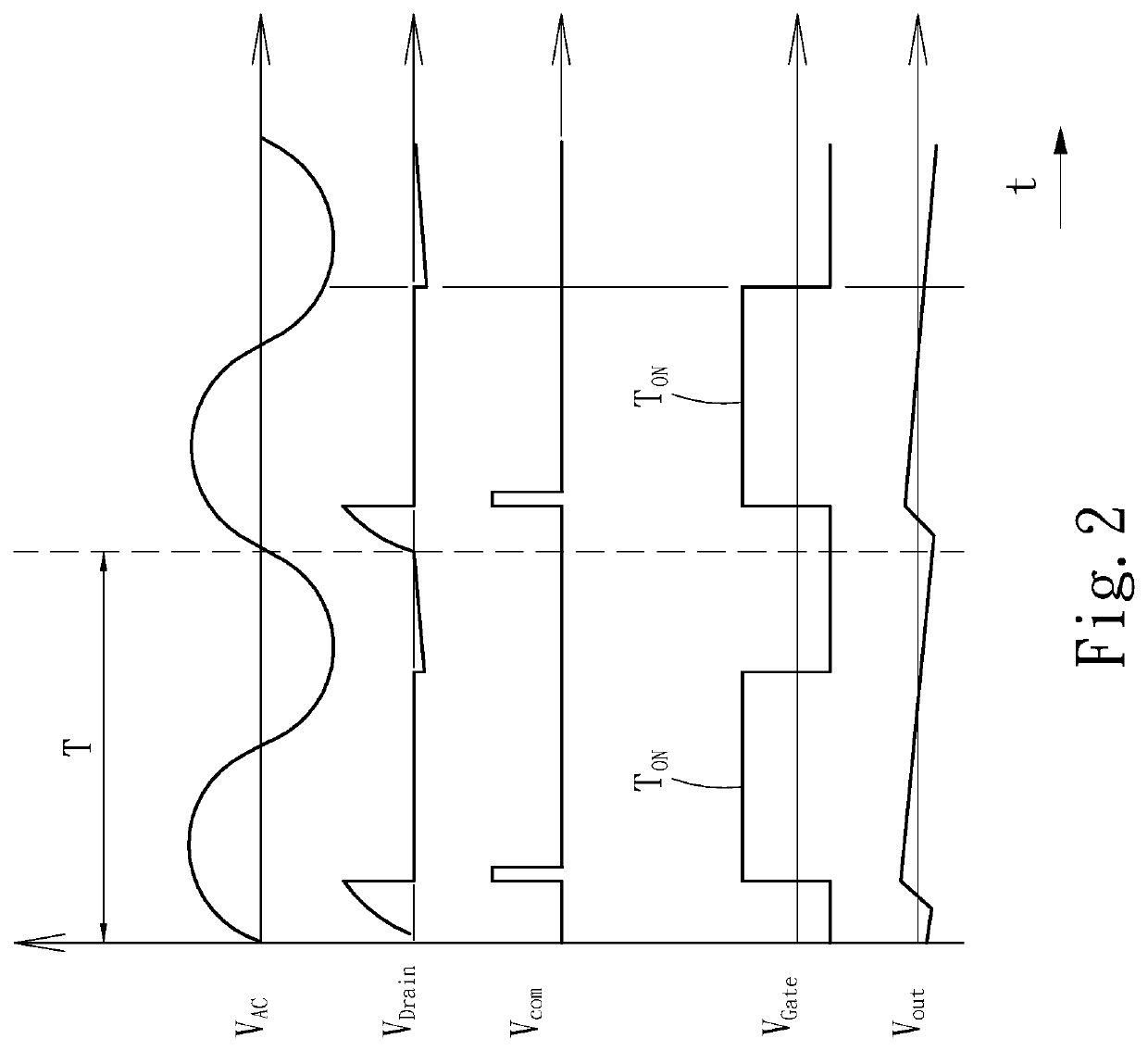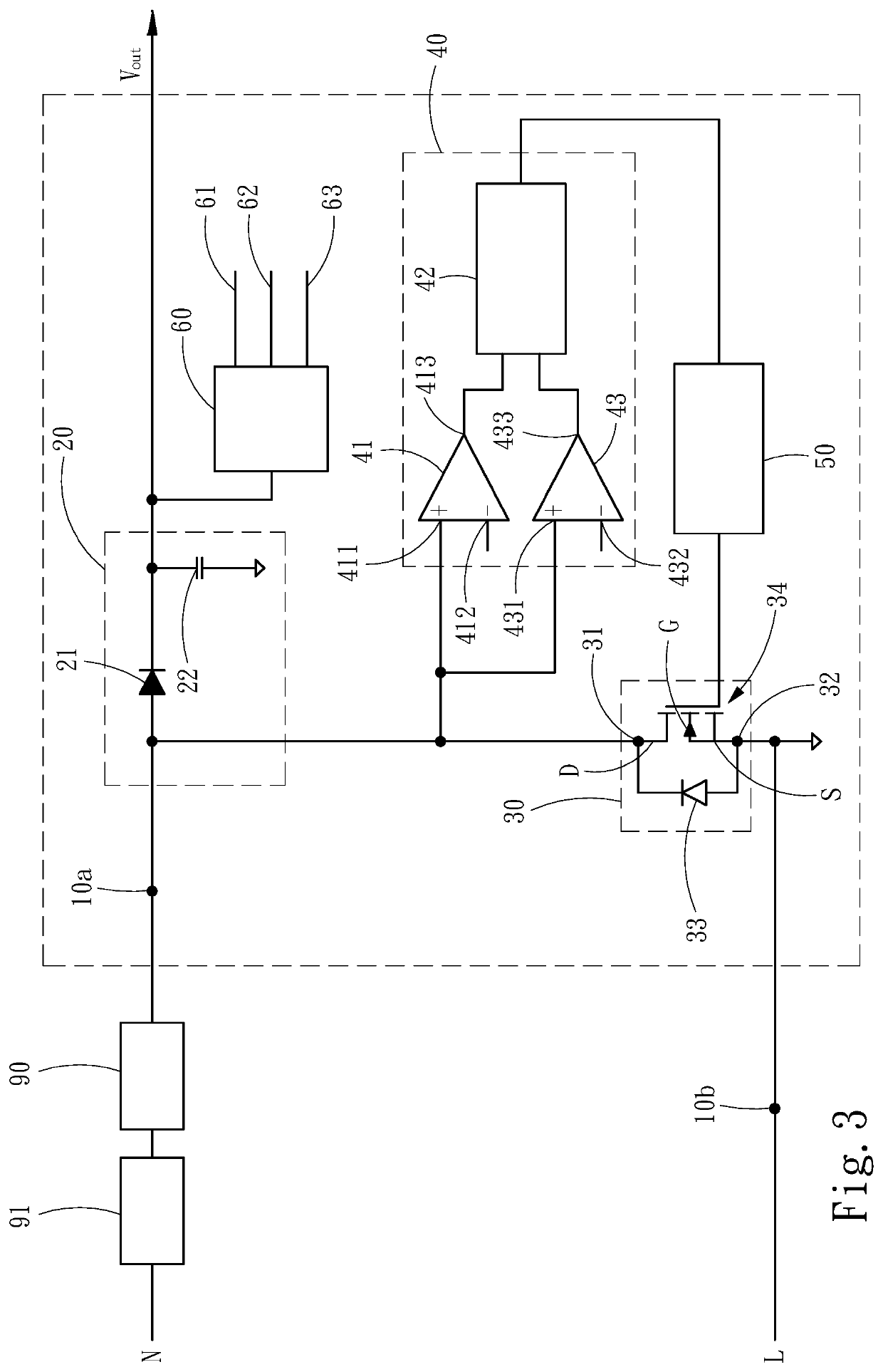Power conversion circuit and method thereof
- Summary
- Abstract
- Description
- Claims
- Application Information
AI Technical Summary
Benefits of technology
Problems solved by technology
Method used
Image
Examples
Embodiment Construction
[0030]Details and technical contents of the present invention are given with the accompanying drawings below. For the present invention, coupling of two or more components refers to a direct electrical connection formed directly or indirectly between two or more components.
[0031]Refer to FIG. 1 showing a schematic diagram of a circuit diagram of a power conversion circuit provided according to an embodiment of the present invention. The power conversion circuit is applied in a control panel. The power conversion circuit is connected to an alternating current via a power relay 90 and a load 91 connected in series. The power conversion circuit comprises a first grid interface 10a, a second grid interface 10b, a power harvesting module 20, a switching module 30, a sampling module 40 and a driver module 50. In this embodiment, the power conversion circuit further includes a linear regulator 60. In an embodiment shown in FIG. 1, the control panel is connected with a single live wire, mor...
PUM
 Login to View More
Login to View More Abstract
Description
Claims
Application Information
 Login to View More
Login to View More - R&D
- Intellectual Property
- Life Sciences
- Materials
- Tech Scout
- Unparalleled Data Quality
- Higher Quality Content
- 60% Fewer Hallucinations
Browse by: Latest US Patents, China's latest patents, Technical Efficacy Thesaurus, Application Domain, Technology Topic, Popular Technical Reports.
© 2025 PatSnap. All rights reserved.Legal|Privacy policy|Modern Slavery Act Transparency Statement|Sitemap|About US| Contact US: help@patsnap.com



